Kitchen Decorating Tips
When choosing a finish for the walls, apron or dining area in the kitchen, you should give preference to practical, environmentally friendly and aesthetic coatings. Decorative plaster fully meets these requirements. The composition includes natural materials and is suitable for use in the kitchen. Application methods allow you to create imitation of various surfaces.
Properties that indicate the practicality of using decorative plaster in the kitchen:
- Moisture resistance.
- Fire resistance.
- Antibacterial properties
- Abrasion resistance.
- No seams.
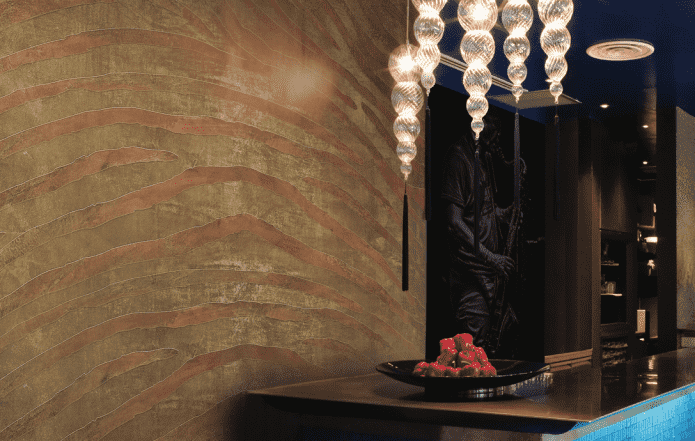
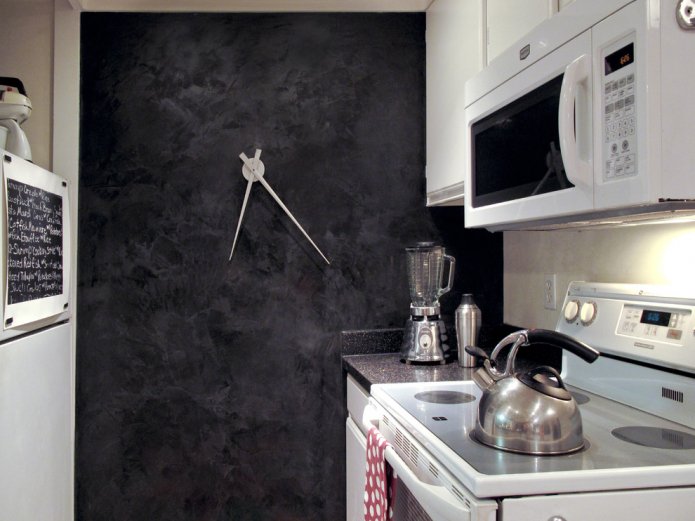
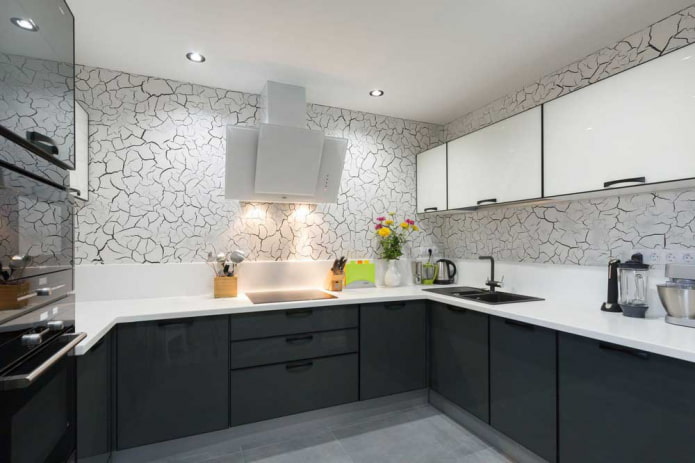
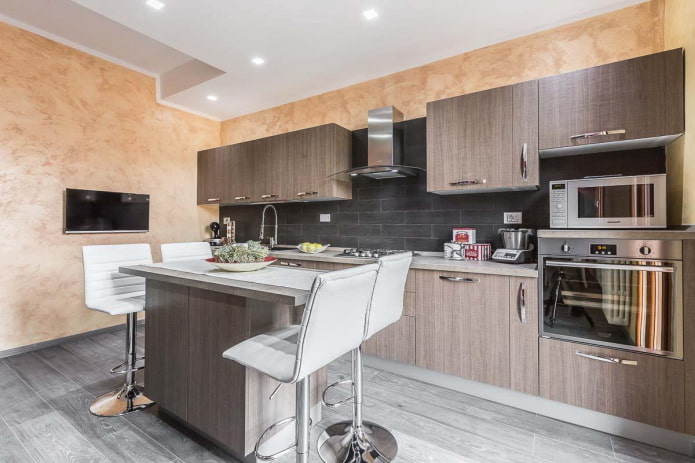
What types of decorative plaster can be used in the kitchen?
Depending on the composition decorative plasters can have certain performance characteristics and appearance. The mixtures are based on mineral or synthetic material. And stone chips, cellulose fibers or polymer granules are used as additives to give the surface relief.
Decorative coatings are also distinguished by the method of application. Venetian, textured and structural plaster are used in the kitchen.
Venetian
Marble finishing, made on the basis of plaster mixtures, is quite practical and economical compared to natural stone. Venetian plaster consists of stone dust, a binder, a dye and allows you to play with color and relief.
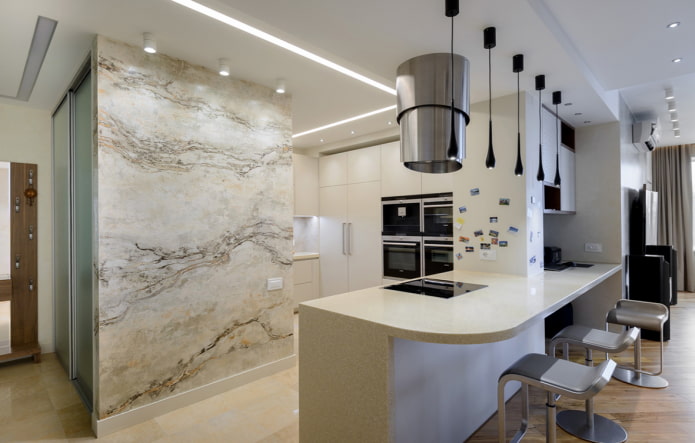
The photo shows a wall with Venetian marble finish.
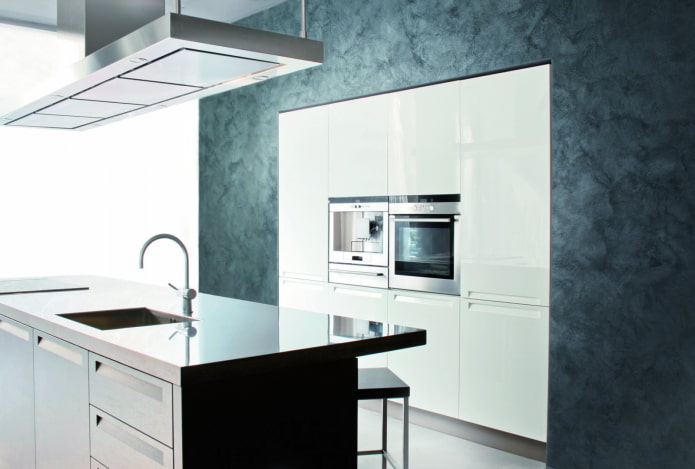

The combination of glossy and matte veins, as well as mother-of-pearl coating creates the effect of natural material.
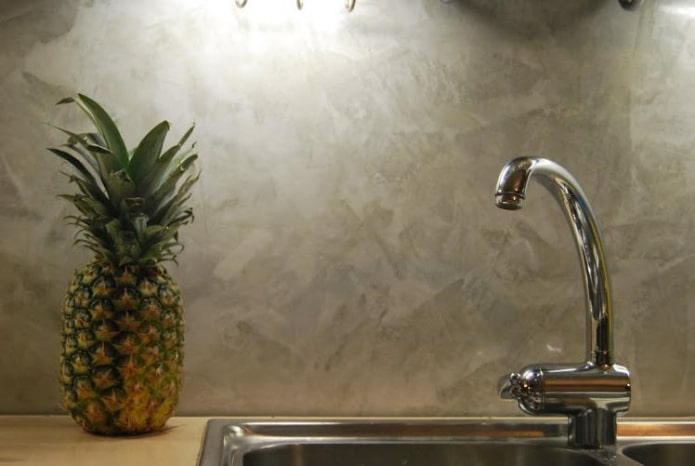
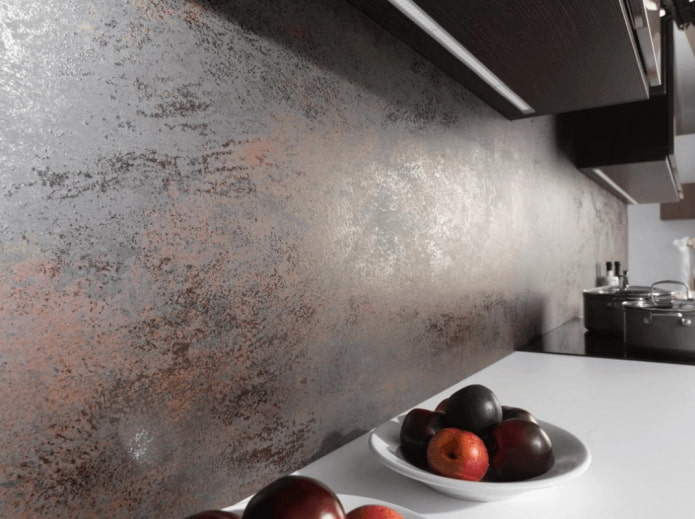
Textured
This type of finish is achieved not due to insoluble inclusions, but using a specific application technology and special spatulas. The result is a three-dimensional, relief surface with a unique pattern.
Textured plaster can include craquelure, or an artificially aged coating with cracks. It is achieved by alternating paint and craquelure varnish coatings, which crack when dry.
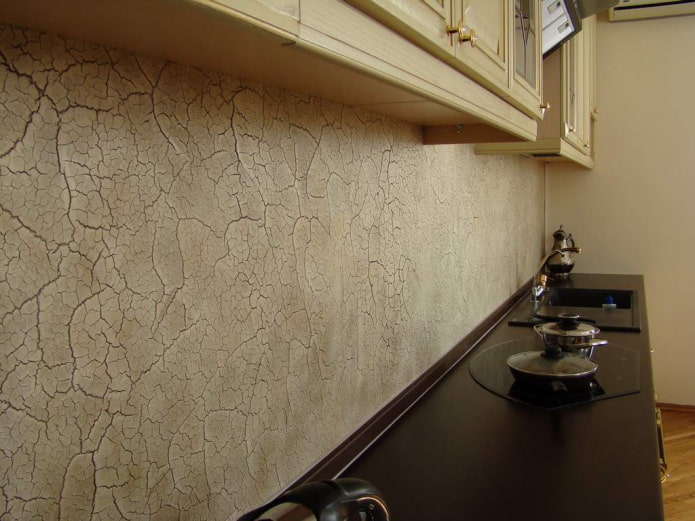

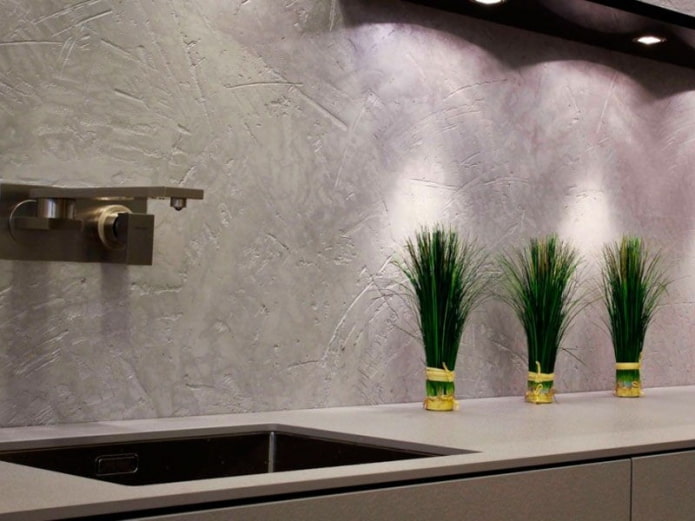
The photo shows a textured finish of an apron with the effect of scratches and potholes.
Structural
A decorative coating that has a granular structure due to the inclusion of insoluble granules or special fibers in the material is called structural. Such a surface will have a special texture.

The photo shows a structural granular coating of the kitchen work area.
Kitchen interior design ideas
A variety of structures and shades allows you to implement any design technique.
Under concrete
A decorative coating with a concrete effect can be made using special compounds, such as: microcement, decorative art concrete or ordinary cement mortar. There is a wide choice of gray, beige, white, and sometimes rusty shades.
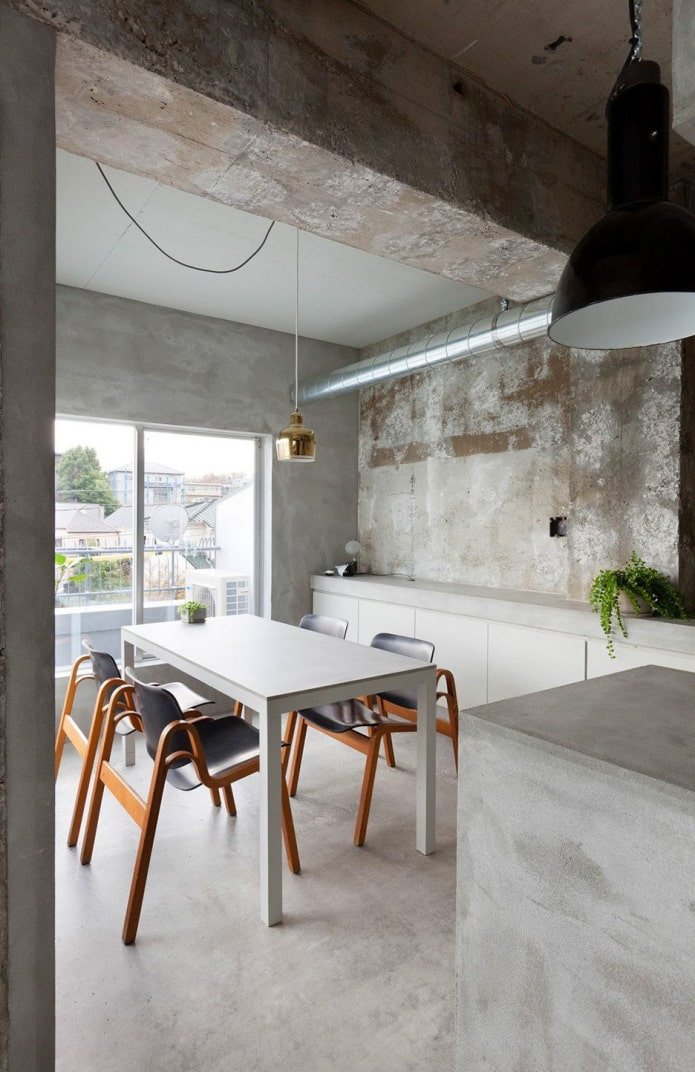
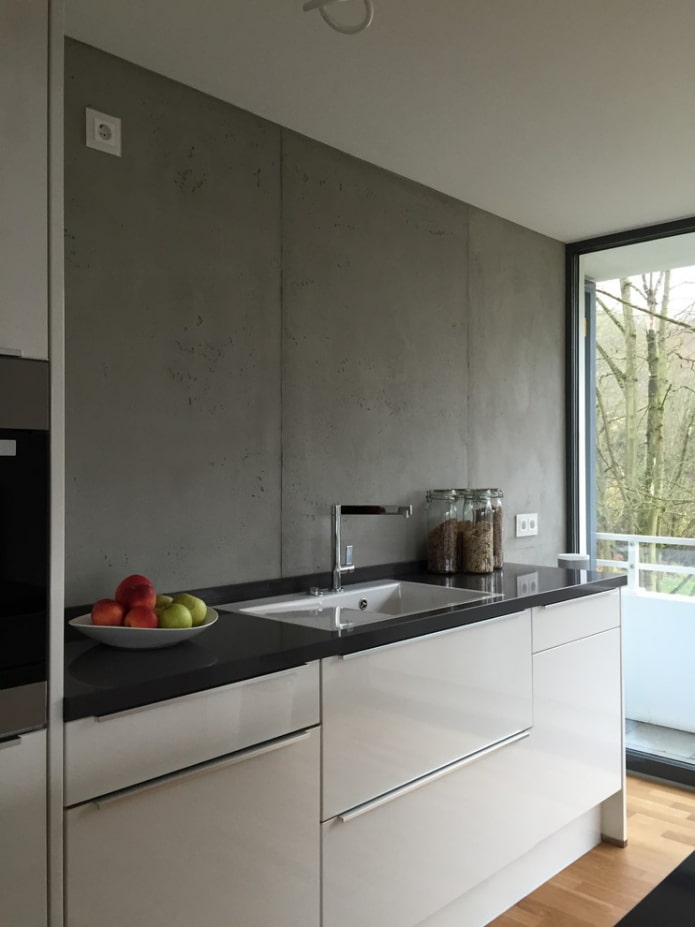
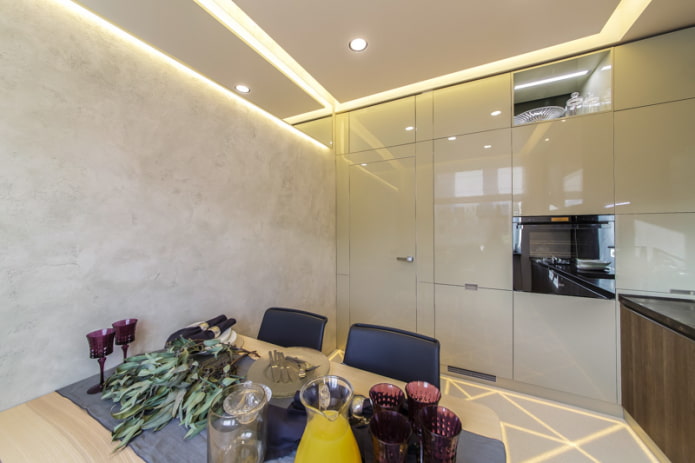
The photo shows a wall under concrete in a modern interior.
Marble
Marble plaster is done smooth or with veins. The color palette allows you to create a resemblance to natural stone.
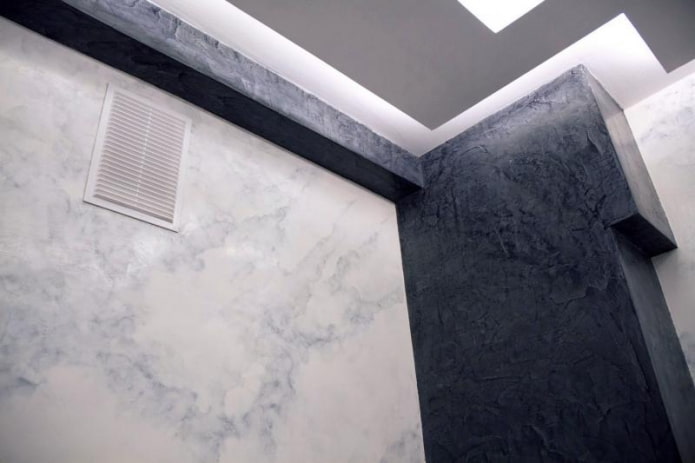
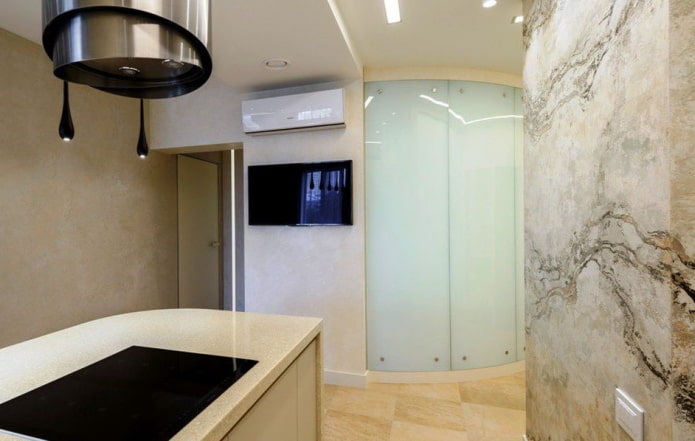
Silk
Plaster with glossy or metallic pigment creates the effect of wet silk in the kitchen interior.

In the photo, the walls and apron in the kitchen-dining room are decorated using the “silk” effect.
Brick-like
Plaster with coarse fractions and a mineral base allows you to create a three-dimensional finish under the brick.
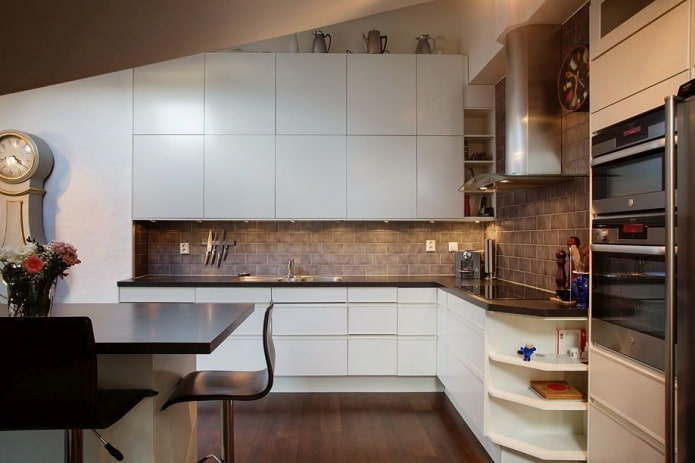
In the photo, the apron is decorated under the brick.
Colored
Design using different shades will help create a worn effect on the wall or a two-color pattern.

Colors of decorative plaster
There is a wide palette of colors for decorative coating. The shades can be mixed or sprayed on top of each other, and also combined with decorative painting.
The most common colors:
- White.
- Gray.
- Beige.
- Brown.
- Green.
- Silver.
- Gold.
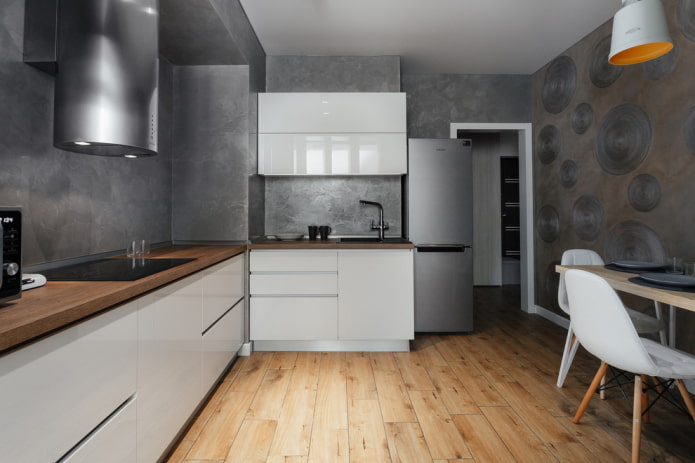
The photo shows a kitchen with gray concrete finish.
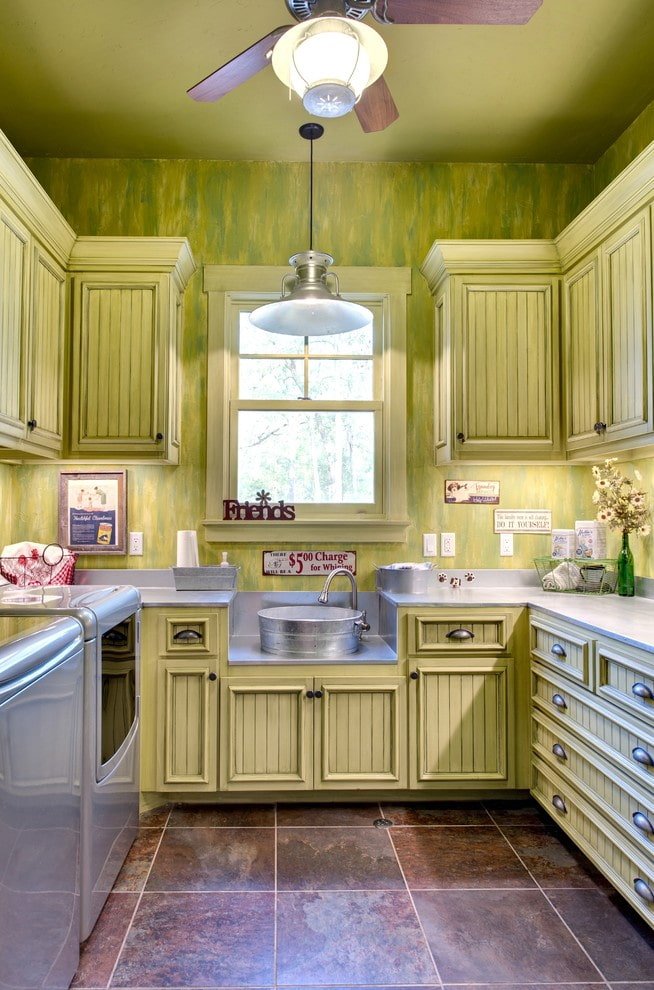
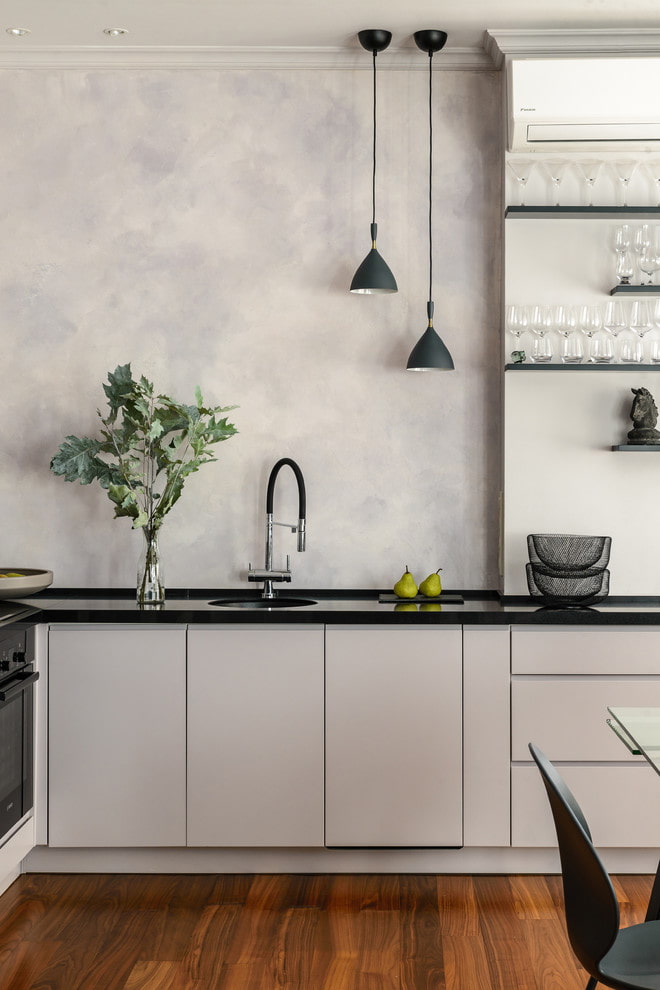
Colors can be combined and applied randomly in strokes.
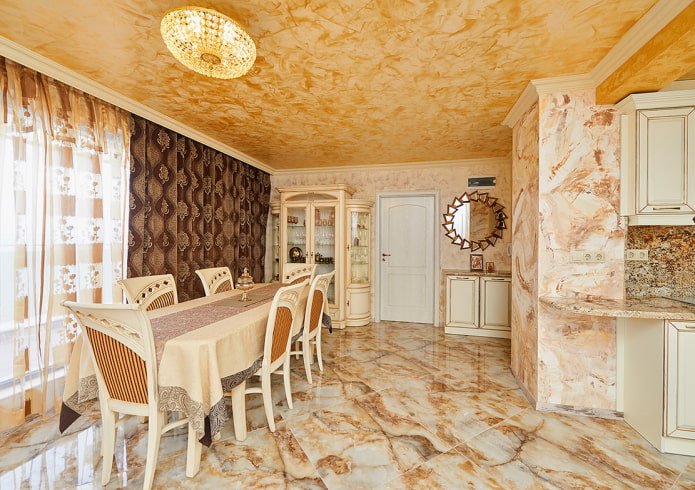
Stylish solution
Decorative plaster can be used in the kitchen in any style. Stone or concrete coating are the most popular solutions in both modern and classic interiors.
Most often, such wall decoration is used in the styles:
- Classic.
- Loft.
- Neoclassicism.
- Minimalism.
- High-tech.
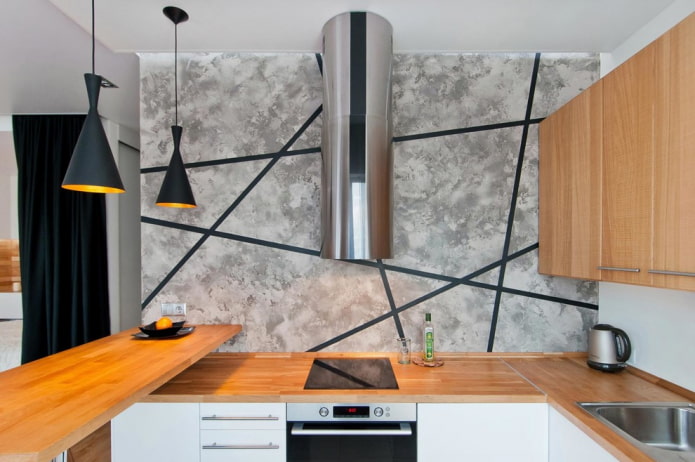
The photo shows a compact kitchen in high-tech style with one of the walls decorated in concrete.
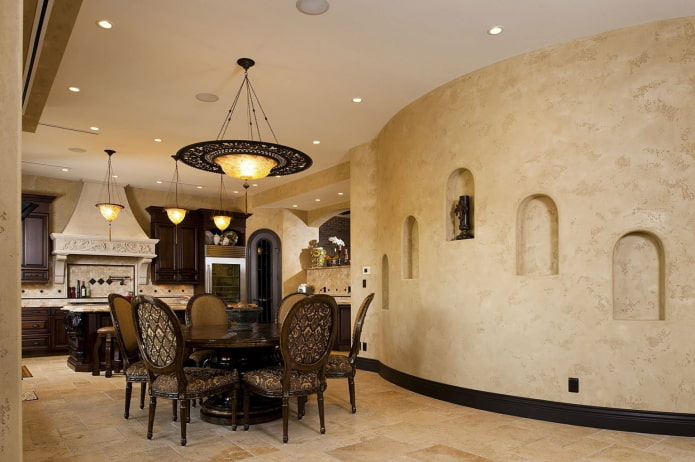


Apron decoration options
Thanks to the excellent performance characteristics plaster is ideal for finishing kitchen aprons. This design is universal. A bright coating can serve as an accent solution in the interior of both a small and a spacious kitchen.
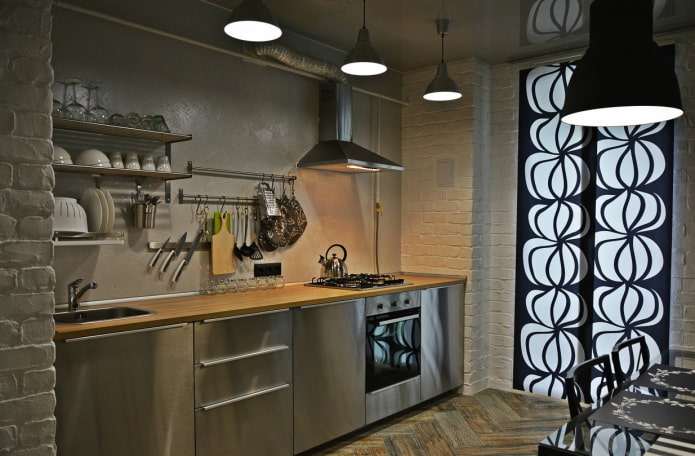
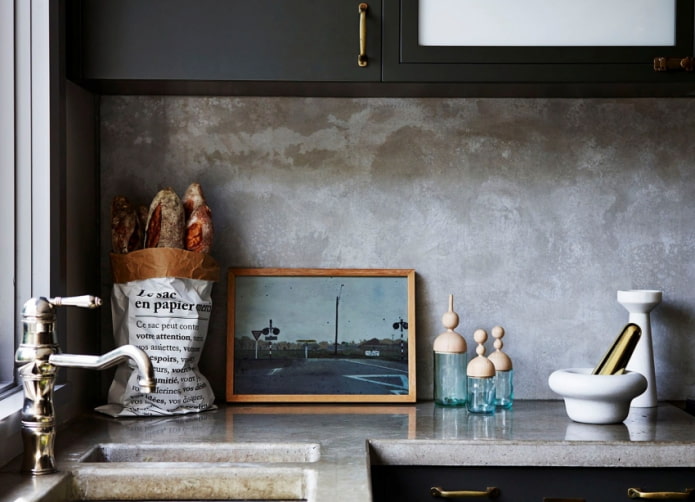
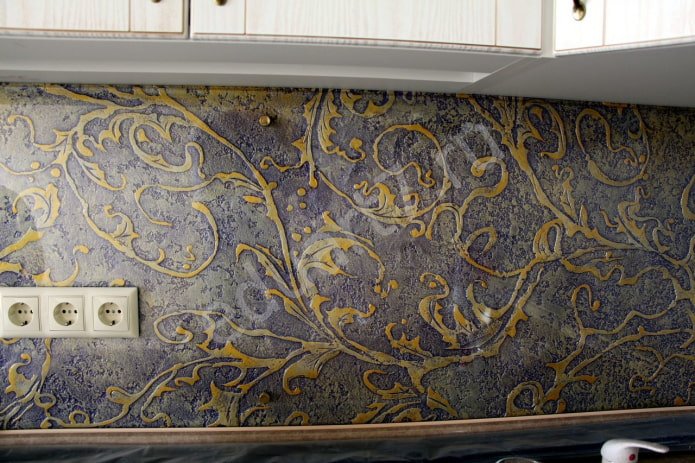
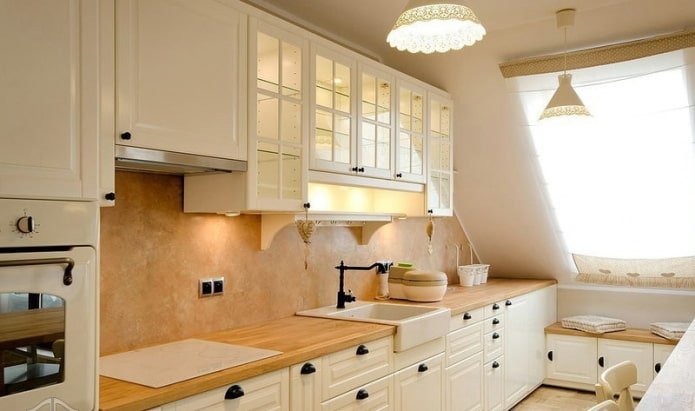
Examples of kitchen-living room design
Decorating the walls with decorative plaster can unite the kitchen and living room into a single space and create an interesting studio design. Such a coating can highlight the dining area at the table or the apron in the kitchen.
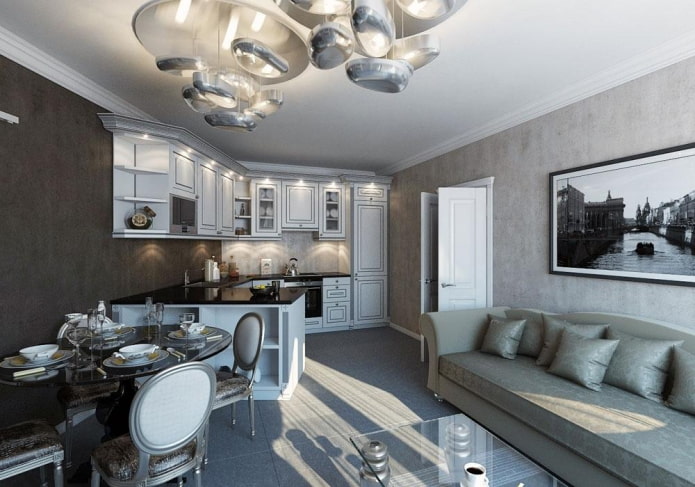
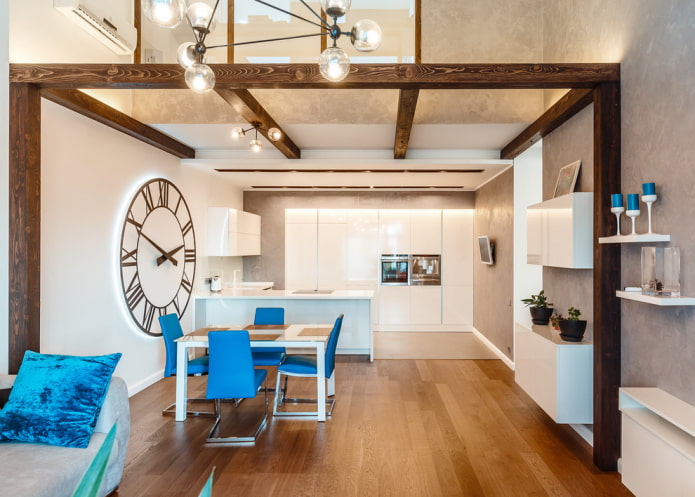

Now reading:
- Comprehensive Guide to Purchasing Used Maseratis
- Making a lampshade yourself: 14 master classes with photos and video instructions.
- Loft style wallpaper: 45 photos of modern ideas and design solutions for the interior.
- best alternatives for replacing a wall in the interior.
- Linoleum care: tips and instructions for proper treatment.